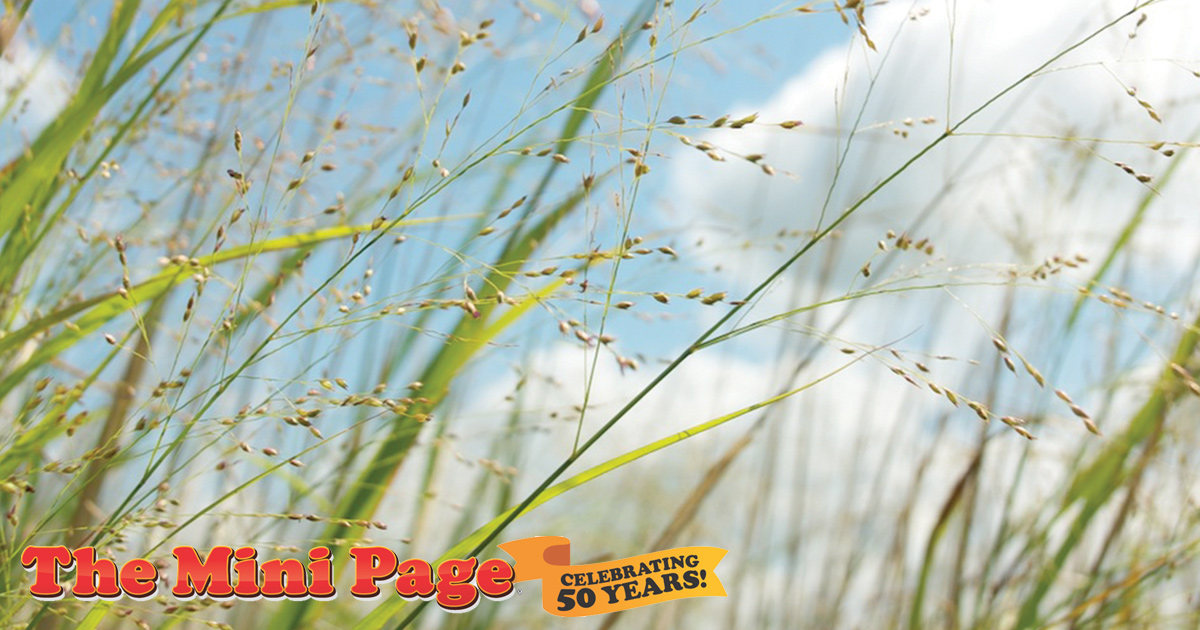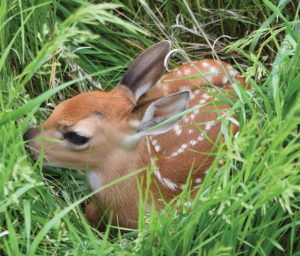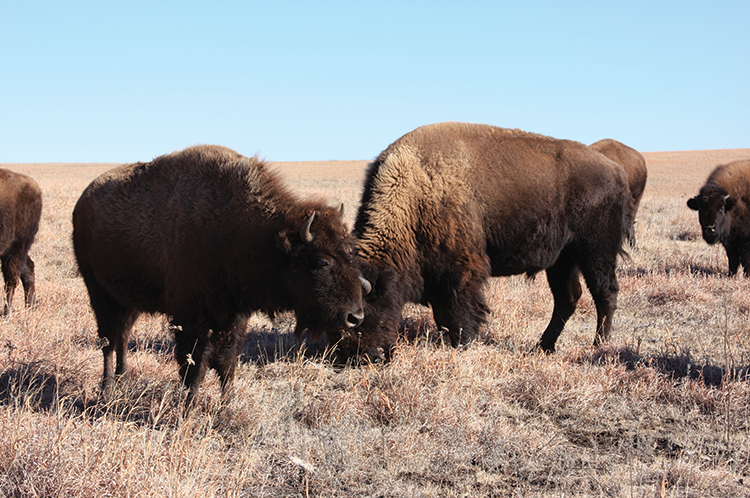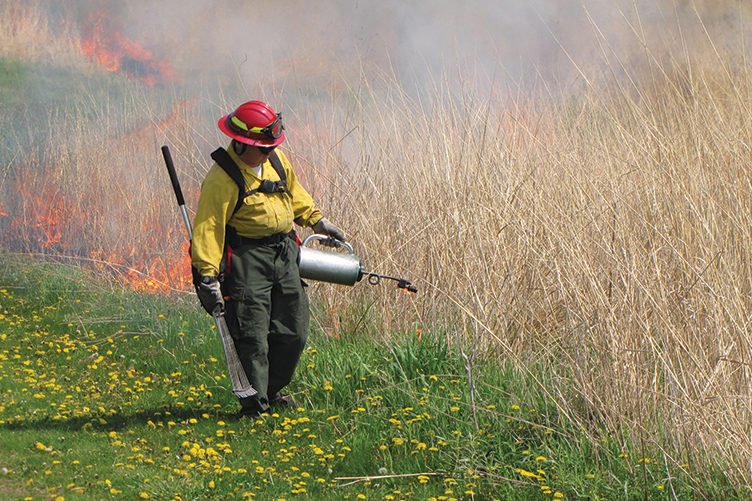
AMP | Kids is proud to announce an ongoing partnership with The Mini Page, now in its 50th year of providing engaging and fun learning opportunities to young readers across the country. This feature was originally syndicated in newspapers the week of July 27 – August 2, 2019. It is distributed digitally here with permission from Andrews McMeel Syndication. Enjoy and share with the young learners in your life!
When American settlers headed west, they came upon a great area covered with tall grasses. There were almost no trees or bushes. The first Europeans to explore this grassy area named it “prairie,” from the French word for meadow. Constant wind made the grasses sway like the waves of the sea. Early settlers often called the prairie “a sea of grass.” They called their covered wagons “prairie schooners.” (A schooner is a sailing ship.)
Lost in the grass

A fawn hides among the tallgrass at Pipestone National Monument in Minnesota.
When settlers reached the prairies in midsummer, grasses could be 12 feet high. If cattle strayed, the only way to find them was to stand on top of a horse and search for something moving in the grass. Pioneers, especially children, had to stay close to the wagon when they walked. If they wandered too far, they could get lost.
Today, climate conditions have changed, and the grasses usually grow to about 6 feet high — still high enough to get lost in.
A special system
Prairies are one of the most special ecosystems, or habitats, in the world. They have a wide variety of plants and animals. Many experts believe the only ecosystem with more variety is the rainforest in Brazil. The diversity, or variety, in the prairie system helps to keep it healthy.
Weather can range from very hot to very cold. Drought, tornadoes and blizzards also strike in the prairie.
Types of prairies
There are three types of prairies: tallgrass, mixed grass and shortgrass. The tallgrass prairie gets the most rain; the shortgrass gets the least. The mixed-grass prairie falls in between.
Prairie plants
Plants growing in the prairie have developed thinner leaves than most other plants. That way they lose less moisture from evaporation. Prairie plants also may have hairlike growths on their leaves. The hair helps capture the morning dew.
The plants on prairies have extra-long roots. Some can go as deep as 20 feet.
Prairie animals
About 300 species, or types, of birds, about 80 species of mammals and hundreds of species of insects live in the prairie.
Because there are so few trees, birds such as prairie chickens build their nests on the ground, hidden by the tall grasses. Small mammals such as prairie dogs and badgers make homes by tunneling underground. They run into their burrows to escape predators, grass fires or heat. Large mammals, such as bison, graze on the tall grasses, moving from place to place. Before settlers arrived, the American elk grazed on the tallgrass prairie. The destruction of their habitat has pushed most of them out of the prairies and into mountain areas.
- Bison were once hunted almost to extinction. This herd grazes on the Tallgrass Prairie National Preserve in Kansas.
- Prairie managers set grasses on fire to control the burn and make the soil more fertile.
Resources
On the Web:
At the library:
- Bluestem Horizon: A Story of a Tallgrass Prairie by Evelyn Lee
Teachers: For standards-based activities to accompany this feature, visit Andrews McMeel Syndication. And follow The Mini Page on Facebook!


